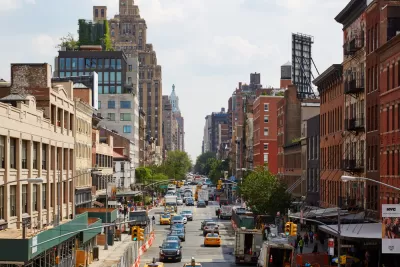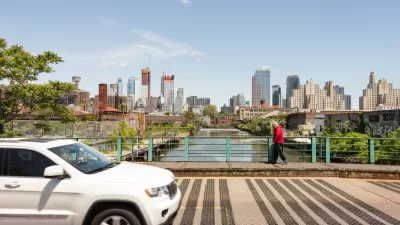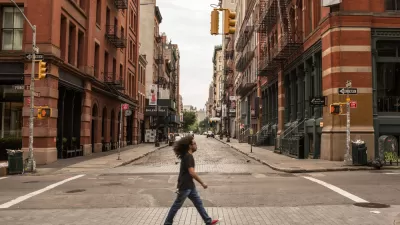In keeping with the goals of the Regional Plan Association's Fourth Regional Plan, New York City must continue its nascent trend of rezoning for more building capacity in affluent neighborhoods.

Moses Gates writes for the Regional Plan Association to present a vision for affluent New York neighborhoods that includes more zoned capacity for housing development—i.e., upzoning.
The article is presented in context of the ongoing effort to upzone NoHo and SoHo in Manhattan—the most affluent neighborhood to be rezoned for more development capacity in a recent series of rezoning processes in New York City.
- NoHo and SoHo Rezoning Controversies, Amplified (September 2020)
- Advocating for Upzoning in Two of New York's Wealthiest Neighborhoods (June 2019)
- Op-Ed: SoHo and NoHo Need a Zoning Overhaul (June 2019)
- SoHo and NoHo Next for the New York City Rezoning Tour (September 2018)
The central argument of Moses's writing here: that NoHo and SoHo might be there first, but they shouldn't be the last:
For too long, higher-income, majority-white neighborhoods have been able to stymie development and affordable housing, shifting the burden onto other, lower-income neighborhoods. We need affordable housing in every neighborhood, especially ones without it.
Another rezoning process in an affluent part of the city is already underway in Gowanus, but more "could easily follow," according to Moses, who has some specific recommendations: Midwood, Forest Hills North, Riverdale, the Meatpacking District and the Far-West Village, and Grasmere.
For those keeping track at home, that's all five boroughs, and a lot more detail is included to explain the specific potential of each neighborhood to add more housing capacity.
FULL STORY: Five New York Neighborhoods to Upzone for Affordable Housing

Trump Administration Could Effectively End Housing Voucher Program
Federal officials are eyeing major cuts to the Section 8 program that helps millions of low-income households pay rent.

Planetizen Federal Action Tracker
A weekly monitor of how Trump’s orders and actions are impacting planners and planning in America.

The 120 Year Old Tiny Home Villages That Sheltered San Francisco’s Earthquake Refugees
More than a century ago, San Francisco mobilized to house thousands of residents displaced by the 1906 earthquake. Could their strategy offer a model for the present?

HSR Reaches Key Settlement in Northern California City
The state’s high-speed rail authority reached an agreement with Millbrae, a key city on the train’s proposed route to San Francisco.

Washington State Legislature Passes Parking Reform Bill
A bill that would limit parking requirements for new developments is headed to the governor’s desk.

Missouri Law Would Ban Protections for Housing Voucher Users
A state law seeks to overturn source-of-income discrimination bans passed by several Missouri cities.
Urban Design for Planners 1: Software Tools
This six-course series explores essential urban design concepts using open source software and equips planners with the tools they need to participate fully in the urban design process.
Planning for Universal Design
Learn the tools for implementing Universal Design in planning regulations.
Ada County Highway District
Clanton & Associates, Inc.
Jessamine County Fiscal Court
Institute for Housing and Urban Development Studies (IHS)
City of Grandview
Harvard GSD Executive Education
Toledo-Lucas County Plan Commissions
Salt Lake City
NYU Wagner Graduate School of Public Service





























